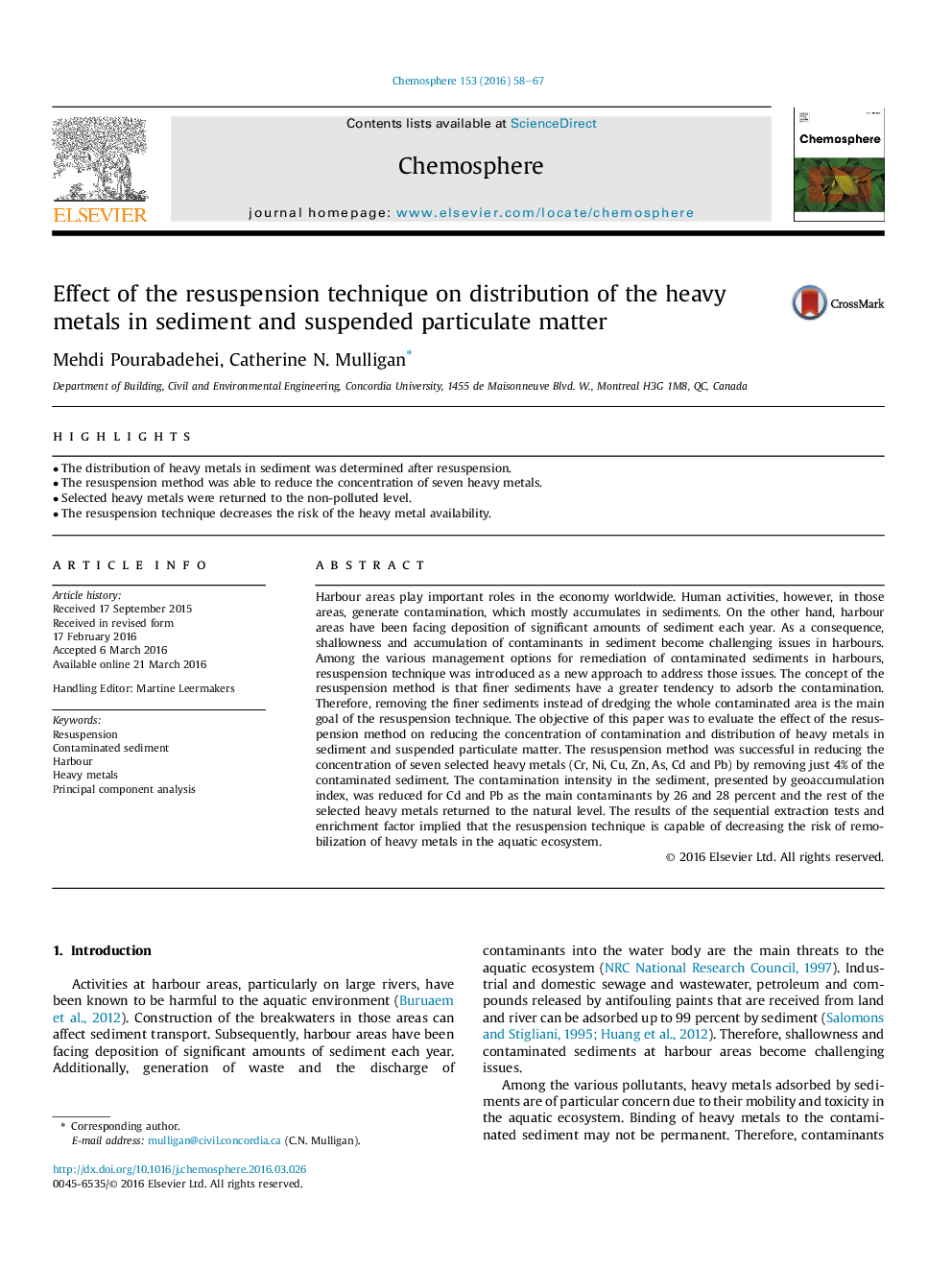| کد مقاله | کد نشریه | سال انتشار | مقاله انگلیسی | نسخه تمام متن |
|---|---|---|---|---|
| 4407668 | 1618818 | 2016 | 10 صفحه PDF | دانلود رایگان |
• The distribution of heavy metals in sediment was determined after resuspension.
• The resuspension method was able to reduce the concentration of seven heavy metals.
• Selected heavy metals were returned to the non-polluted level.
• The resuspension technique decreases the risk of the heavy metal availability.
Harbour areas play important roles in the economy worldwide. Human activities, however, in those areas, generate contamination, which mostly accumulates in sediments. On the other hand, harbour areas have been facing deposition of significant amounts of sediment each year. As a consequence, shallowness and accumulation of contaminants in sediment become challenging issues in harbours. Among the various management options for remediation of contaminated sediments in harbours, resuspension technique was introduced as a new approach to address those issues. The concept of the resuspension method is that finer sediments have a greater tendency to adsorb the contamination. Therefore, removing the finer sediments instead of dredging the whole contaminated area is the main goal of the resuspension technique. The objective of this paper was to evaluate the effect of the resuspension method on reducing the concentration of contamination and distribution of heavy metals in sediment and suspended particulate matter. The resuspension method was successful in reducing the concentration of seven selected heavy metals (Cr, Ni, Cu, Zn, As, Cd and Pb) by removing just 4% of the contaminated sediment. The contamination intensity in the sediment, presented by geoaccumulation index, was reduced for Cd and Pb as the main contaminants by 26 and 28 percent and the rest of the selected heavy metals returned to the natural level. The results of the sequential extraction tests and enrichment factor implied that the resuspension technique is capable of decreasing the risk of remobilization of heavy metals in the aquatic ecosystem.
Journal: Chemosphere - Volume 153, June 2016, Pages 58–67
